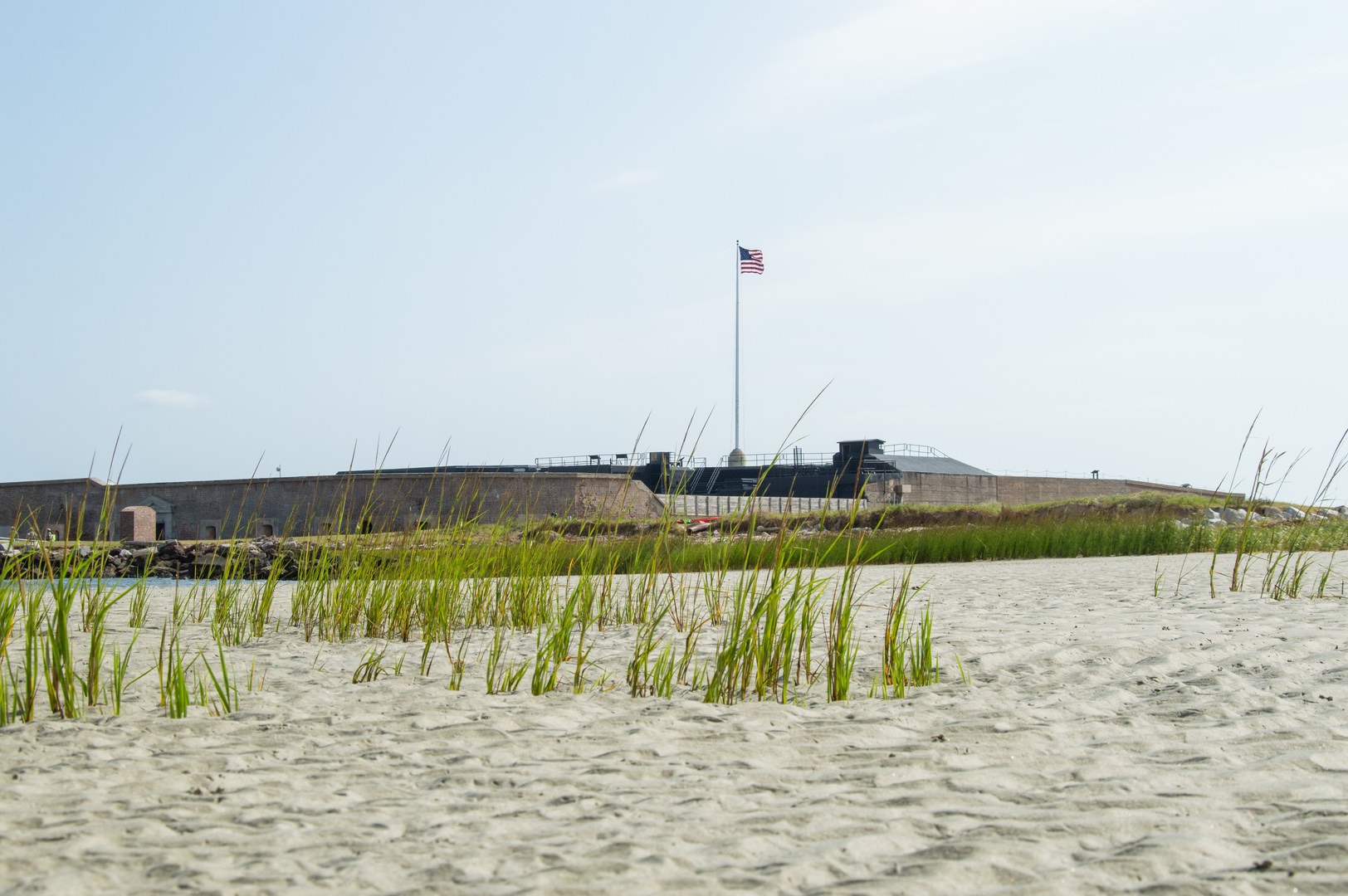You are here
The first shots of the Civil War were fired at Fort Sumter. It's strategic position at the entrance to Charleston Harbor made it invaluable to the secessionist city of Charleston, and the Confederacy could not abide Union control of its port. Union forces held Fort Sumter, but Confederate forts had already been built on nearby islands. Though war had been imminent for months, cannons aimed at Fort Sumter from James Island became the spark on the powder keg, and their firing on April 12, 1861, was the ignition of the American Civil War.
Fort Sumter is today one of the most popular attractions in Charleston, and it is preserved as part of Fort Sumter National Monument. Ferry boats depart from the city multiple times daily to deliver visitors for tours. This fort is indeed a staple destination of Historic Charleston and for American history in general, but the national monument actually contains three other significant sites and more activities aside from Fort Sumter that are often overlooked. These are Fort Moultrie, the Charleston Light, and Liberty Square.
Fort Moultrie
Fort Moultrie is the oldest site within the national monument. It predates Fort Sumter by more than 50 years and has had a useful lifespan far surpassing Fort Sumter's. Originally built by American forces during the Revolutionary War, it has since seen many iterations, changing with technology and theaters of warfare. It saw combat during only the Revolutionary and Civil Wars, but it was updated and ready for action through all American conflicts up to World War II, and it remained in nearly continuous operation until 1960, when it was turned over to the National Park Service.
Today Fort Moultrie is an interactive museum that offers several recreation opportunities. It has a nice visitor center as well as a self-guided tour of the fort, much of which is open to the public inside and out. It actually has a lot more to explore than Fort Sumter does. What's more, the grounds have walking paths, a grassy field, picnic tables, benches, and a public beach with views of Fort Sumter and Charleston Harbor. Fishing is popular on the beach and at a dock on the backside of the island. Located on Sullivan's Island, Fort Moultrie is accessible by vehicle rather than ferry and is an easy drive from Charleston. Entry is only $3, payable at the visitor center near the main parking area. Dogs are allowed on leash on the lawn and on the beach, but not inside any part of the fort or other park buildings.
Charleston Light
Also on Sullivan's Island is the Charleston Light, which was the last federally-funded manned lighthouse built on shore in the U.S. At the time of it's completion in 1962, it was one of the most high-tech lighthouses in the world. It featured an elevator, air conditioning (both unique for U.S. lighthouses), and a 28-million candlepower light. The light proved to be far too powerful, actually, and was considered unsafe for operators and the community. It was quickly replaced with a 1.2-million candlepower light, which was perfectly adequate. The light still operates, but it has been automated and unmanned since 1975. It is now part of the national monument, but visitors are not allowed inside. You can view the lighthouse up close from the ground, however, as it is accessible from the town of Sullivan's Island or from the beach. A few informative signs are posted on site.
Liberty Square
This public park is the site of the national monument's main visitor center, the Fort Sumter Visitor Education Center. It is also one of the departure locations for ferries to the fort. Entry to visitor center plus the park's nice waterfront and grassy lawn are free. The South Carolina Aquarium is next door (separate entry fee). Liberty Park is easy walking distance from most of Charleston's Historic District, and it is reachable by public transportation.
Fort Sumter
This is the most popular and historically significant site at the national monument by far. It is on an island near the mouth of Charleston Harbor, only accessible by ferry service or private boat. Entrance to this part of the monument is technically free, but tickets must be purchased for the ferry, which doubles as a unique tour of Charleston Harbor where you'll have a chance of seeing dolphins. It departs from both Liberty Square in downtown and from Patriots Point in Mount Pleasant. There are concessions on board as well as a gift shop with some refreshments available at the fort. Water bottle filling stations are available as well. Expect to spend about 2.5 hours for a ferry tour, which includes time for a ranger-led tour and browsing on your own around Fort Sumter.
The fort's small island is connected by a sandbar to James Island at low tide. If you are there when the tide is out you can stroll along this exposed stretch of sand, where you will find unique views and beachcombing opportunities. Be mindful of the ferry schedule, however. You can always catch the next as long as you aren't on the last trip of the day.
Logistics + Planning
Current Weather: Powered by Dark Sky






























Comments
Sign In and share them.